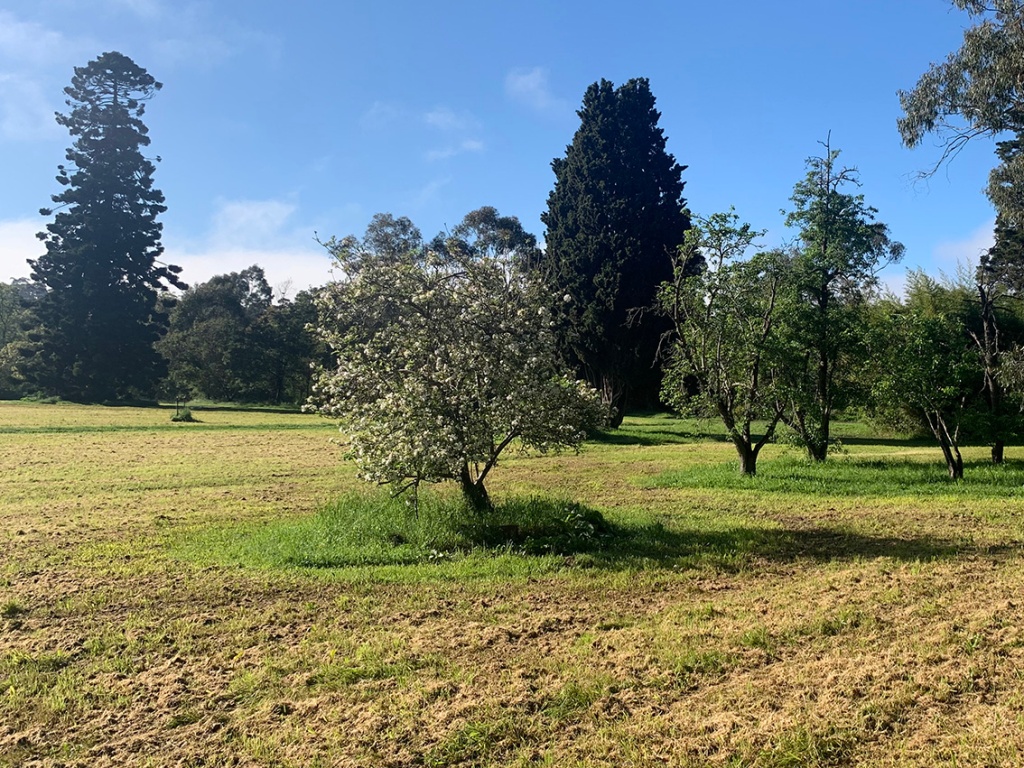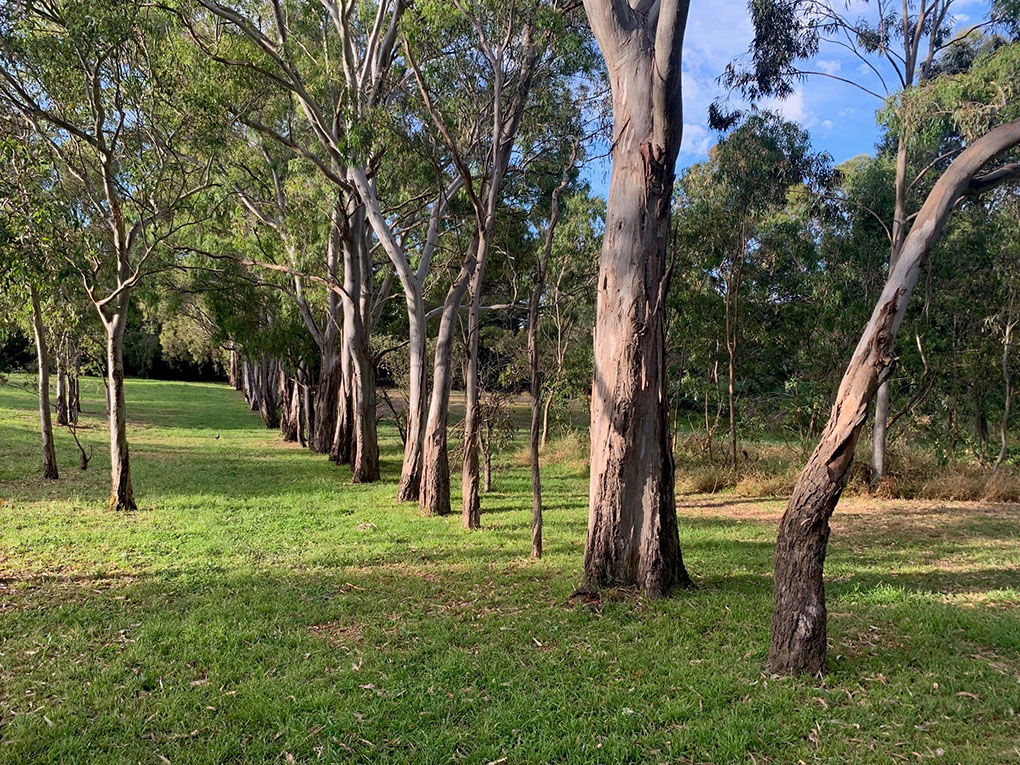The poet and playwright, Oscar Wilde has sometimes been quoted as saying that he liked talking to brick walls. They were the only thing that didn’t contradict him he said, but then this was coming from the man who also alleged he was in a war to the death with his wallpaper. “One or the other of us has to go,” he explained to a friend shortly before cashing in his chips for the last time.
There are lots of walls. We use them to separate cities, to protect borders and to divide. On an emotional scale they save the sensitive and protect from melancholy and despair, but if as they say, the walls really could speak, I wonder what they might say about the last 150 years of life here at Yallambie?
“Come right on in fellas. I’ve had a touch of the old lumbago down the hall of late, but nothing you’ll find a lick of paint won’t soon put right.”
Sometimes it seems to me that the life and times of an old building get absorbed with time into the fabric of a place. It happens in ways that aren’t altogether explainable, and to tell you the truth, are not even entirely rational. It’s a part of the bigger picture of living they will tell you, but what is really meant by this is that it’s part of a much, much smaller picture, the vibrational frequencies of the structures of all things in the face of a chaotic universe. To our brains this translates into mathematical equations which are used to explain the fundamentals of science, but to our ears it takes the form of musical ratios measured between sonic frequencies. Many therapists believe now that music and sound can play an important role in mind-body mechanisms, aiding consciousness, communication and emotion in ways that promote general health and well-being. I don’t know if this might be overstating the case, but we all know how a heard piece of favoured music can make you feel and how it can take you off to another place in time and space.

Music was apparently always going to be part and parcel of life at Yallambie Homestead and provisions were made for it at an early point when the original drawing and smoking rooms were combined into a larger space. When the skirting boards were removed and replaced in the resulting, rather long and skinny room at the front of the house at the start of this century, I found the boards in there had been marked on the reverse sides by a builder from an earlier era with the simple inscription, “music room”, giving some idea to the expected function of the room. It’s certainly served us in this way more than once over the years and we have used it as a stage for concerts of various type, from soulful jazz and Australian folk to poetry readings, piano concertos and harpsichord recitals.
The latest instalment of this story started last year with a chance encounter at the MCG with the widely regarded Australian lutenist, Rosemary Hodgson. We’ve known Rosemary for a long time, ever since she played at Yallambie on a couple of occasions in Early Music ensembles at the start of her career, but in between barracking for Geelong, we managed to ask if she’d be interested in doing something at the house again. She told us that she was curating an Early Music festival in 2024, the inaugural Melbourne Lute Festival for which she would be bringing the world-renowned, Swedish born lute player Jakob Lindberg for a series of small concerts and lute master classes. Would we like to be involved?
So it was Jakob Lindberg played here on a Friday afternoon earlier this month, choosing Thomas Wragge’s original dining room at the back of the house as his stage after testing the acoustics of the smaller room. It was an honour and delight to meet this talented and unassuming musician, to hear his music and to mix with an audience of mainly Early Music players, including a lutenist (lute player) from just across the River in Montmorency and a luthier (lute maker) from not much further away, in Ivanhoe. The lute is an ancient instrument with origins in the Near East, made popular in the Courtly life of the European Renaissance, but apparently it is an instrument that for all this is alive and well today in the middle suburbs of Melbourne.
Jakob’s playing sounded wonderful, the exquisite notes of lute and theorbo seeming to hang in the air before fading off into the outer silence beyond. He played expertly and with feeling, using Stephen Gottlieb built instruments lent to him by Rosemary for the occasion. Jakob told me later that the lute he plays at home in the UK is a late 16th Century original made by Sixtus Rauwolf, a German maker from Augsburg. A quick look at Jakob’s Wikipedia entry lists dozens upon dozens of his recording projects, presumably with and without this lute, but almost as an afterthought, Wikipedia also gives him a screen credit for a 1983 appearance in an episode of Dr Who.
Now you’re talking. A musician with a touch of the Time Lord about him. It’s beginning to make sense.
I’m left to wonder at what it must feel like to be a Time Lord, to play with skill on a musical instrument of such antiquity, an instrument built at a time when Terra Australis was yet unknown to Europeans. Whose fingers once formed notes on those ancient frets? Where were those notes heard and how much dust are those fingers now? These questions remind me of a place, a camp at a ruined Crusader castle years ago on a lonely hillside somewhere in the Middle East where I listened in the still air of the evening dusk to an album of Troubadour music that I had taken with me on my travels. I remember the feeling as I closed my eyes to the music and imagined the place alive again. As I close my eyes today in Yallambie in 2024, I remember the music and I see that place, even now.

That’s the thing about music. It has this ability to take us off at the time of listening to another time and another place. Music is the one thing that unites us as a human species, crossing barriers of language and emotions. Some scientists would have us believe that the process of producing sounds artificially and arranging them into pleasing progressions even crosses the divisions of nature, and indeed is older than the species itself. This is a hotly debated subject you can bet, but the finding of a 60,000-year-old cave bear bone in Slovenia, pierced with what are apparently deliberately spaced holes forming an object somewhat resembling a flute, has been proposed by archaeologists as evidence of the music making abilities of Neanderthal man. Imagine that. A caveman hopping about on one leg like a prehistoric Jethro Tull, blowing down the hollow bone left over from his lunch. Not so very different to Ian Anderson in his heyday, really.
As for that great master of the epigram, poor old Oscar Wilde, I don’t suppose at the end there was too much music left in him, banged up as he was inside the solid masonry walls of Reading Gaol in the last years of his life. By then I reckon Oscar would probably have welcomed a bit of conversation, even the occasional contradiction from the walls as he marked off the days of his lonely existence with scratch marks onto the paperless bricks of the prison cell.
Of the condemned man at Reading, Oscar would write:
It is sweet to dance to violins
When Love and Life are fair:
To dance to flutes, to dance to lutes
Is delicate and rare
(From The Ballad of Reading Gaol, by Oscar Wilde)
For them the dance has ended, but the music goes on.




















































































































































